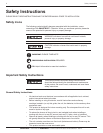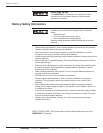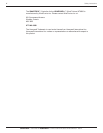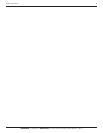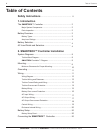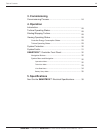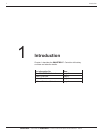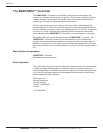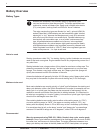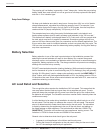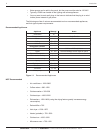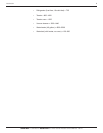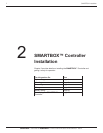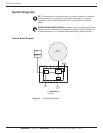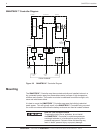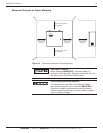
3
Introduction
SMARTBOX™ Controller for HONEYWELL™ Wind Turbine WT6500 Owner’s Manual - Rev14
Battery Overview
Battery Types
Batteriesareclassiedintwodifferentways:byapplication(their
use) and construction (how they are built). The major applications are
automotive, marine and deep cycle. Deep cycle includes solar electric
(PV), wind power, backup power and RV/boat “house” batteries.
Themajorconstructiontypesareooded(or“wet”),gelandAGM(Ab-
sorbed Glass Mat). AGM batteries are also sometimes called “starved
electrolyte”or“dry,”becausetheberglassmatisonly95%saturated
with sulfuric acid and there is no excess liquid. Flooded batteries may
be standard, with removable caps, or a so-called “maintenance free”
type. All gelled batteries are sealed and a few are “valve regulated,”
which means that a tiny valve keeps a slight positive pressure. Nearly
all AGM batteries are sealed valve regulated (commonly referred to as
Valve Regulated Lead-Acid or “VRLA”). Most valve regulated types are
under some pressure - 1 to 4 psi at sea level.
Not to be used
Starting (sometimes called “SLI,” for starting, lighting, ignition) batteries are commonly
used to start and run engines. Engine starters need a very large starting current for a
very short time.
Starting batteries have a large number of thin plates for maximum surface area. The
platesarecomposedofalead“sponge,”similarinappearancetoaverynefoam
sponge. This creates a very large surface area, but if deep-cycled this sponge will
quickly be consumed and fall to the bottom of the cells.
Automotive batteries will generally fail after 30-150 deep cycles if deep-cycled, while
theymaylastforthousandsofcycleswithnormalstartinguse(2-5%discharge).
Minimum to be used
Most marine batteries are usually actually a “hybrid” and fall between the starting and
deep cycle batteries, while a few (Rolls-Surrette and Concorde, for example) are true
deep cycle. In a hybrid type, the plates may be composed of lead sponge, but the
material is coarser and heavier than that used in starting batteries. It is often hard to
tell what you are getting in a “marine” battery, but most are a hybrid type. Hybrid types
shouldnotbedischargedmorethan50%.
Since starting batteries are usually rated as either cold cranking amps (or “CCA”)
or marine cranking amps (or “MCA”), the same as cranking amps (or “CA”), any
battery with the capacity shown in CA or MCA may not be a true deep cycle battery.
It is sometimes hard to tell, as the terms “marine” and “deep cycle” are sometimes
overused. CA and MCA ratings are at 32 degrees F, while CCA is at 0 degrees F.
Recommended
We only recommend using TWO-12V, 100Ah, ooded, deep cycle, marine grade
batteries.DeepCyclebatteriesaredesignedtobedischargeddownasmuchas80%
time after time, and have much thicker plates. The major difference between a true
deep cycle battery and others is that the plates are SOLID Lead plates, not sponge.



